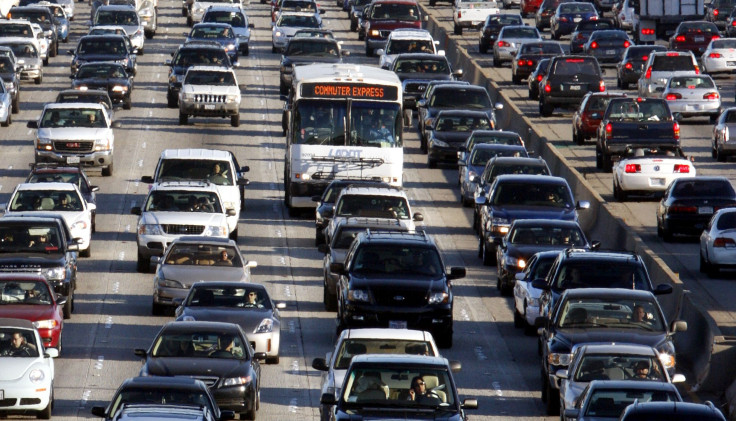Tech News: How Artificial Intelligence Can Solve America's Traffic Problems

Sitting at a clogged intersection, have you ever questioned how long the traffic systems have been around for? Sure, you probably have.
The “modern” three-signal traffic light system was created in 1920 by a Detroit police officer and it has pretty much remained the same since--bigger, of course, but still basically the same.
Digesting that information probably makes you wonder. Especially since there is a good chance you are sitting in a car that can keep your speed constant, brake for you, change lanes for you, sense your blind spots, provide directions, let you know something is wrong with the engine and, someday soon, can even periodically take over some of the driving for you. We are constantly being told how close we are to the largest transformation in the auto industry in history, yet the traffic management industry is still stuck in 1920. It’s a stark contrast. How can the most advanced vehicles ever manufactured drive on roads, where the traffic flow, traffic lights, and intersections are still operating based on the same methodology developed generations ago?
They can’t. Not if you take advantage of all of the artificial intelligence (AI) built into today’s cars and align it with artificial intelligence sensors installed at every intersection coupled with “optimization engines,” also fueled by artificial intelligence, that aggregates data, calculates traffic optimization, and monitors safety.
Thanks to AI, it is possible to bridge the gap between the technology advancement in vehicles and our archaic traffic systems. Such a system has already been proven to transform multiple sections of cities by increasing the flow of traffic, cutting delay times, and responding to traffic needs in real-time all while creating tremendous cost-savings to cities. Specifically, what are known as autonomous traffic management platforms can manage a city’s signalized intersection grid in real-time while digitalizing the existing traffic systems.
Most intersections are not connected to anything, which creates a major challenge if you would like to coordinate between them. The data available is very limited, mostly coming from primitive sensors like inductive loops or similar that can only provide a binary input if there is a vehicle on top. Additionally, managing a grid of intersections requires a massive compute power for highly complex calculations. Imagine that in every given moment, the algorithm has to run millions of calculations to calculate all possible scenarios, based on the changing environment, and decide on the best option to execute by less than a second. Plus, add to the fact that since there is no standardization in the market, you can find various traffic light controllers, from different manufacturers running different versions of firmware and software in one corridor! This is a huge challenge in terms of compatibility. In addition, since this is considered critical infrastructure, there is no room for mistakes.
But progress is being made. City planners now, most of whom have grown up marveling at the wonders of modern technology (iPhones, Amazon, etc.) to manage and organize their lives, are becoming quite open to utilizing artificial intelligence and machine learning to solve urban traffic management. This willingness has been met by the action of a group of very smart engineers and scientists who developed and packaged the required algorithms with the necessary hardware. Thus, the adoption of AI-based platforms is being tested in more and more cities around the world. Traffic management in these “smart” cities is being optimized with V2X capabilities, enabling vehicles to communicate directly with traffic sensors and connected devices, creating a more efficient and sophisticated traffic system. A system currently cranking out compiled data indicating savings of 2,700 hours in traffic, a reduction of 33 tons of CO2 emissions and at a 70-percent cost reduction per intersection. It also opens up the possibility for cities to unlock the benefits of advanced mobility like micropayments, prioritizing road users, increasing safety options and ride-sharing by preparing cities for connected vehicles.
It all starts with a Virtual Management Center (VMC), where city officials define policies such as transit signal priority, emergency vehicle preemption, and pedestrian/bike prioritization. The VMC provides insights on vehicle counts, a log of signal operations, and real-time status information so that officials can have a full view of city traffic patterns, at all times.
These advanced systems even address the bane of all city traffic situations—inclement weather. Traditional timed traffic lights generally can’t account for snow and rain and the hesitancy or indecision of some drivers when the weather turns ugly. Autonomous traffic management systems can collect or be fed up-to-date weather conditions that can strategically change timing at intersections to both assist emergency responders or snow removal efforts.
All of this gives you something to think about the next time you are sitting at a traffic light. Pretty soon the traffic light will communicate with your vehicle to keep traffic moving and will give you less time for you to think about how this all works.
Tal Kreisler is CEO of NoTraffic
© Copyright IBTimes 2024. All rights reserved.





















